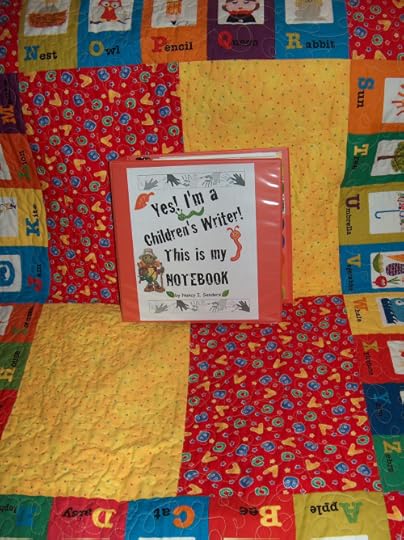Nonfiction Picture Book in 1 Week: Prep
I’ve posted 2 calendars for you to print out and add to your Children’s Writer’s Notebook. One is a 1-week calendar that lists all the tasks we’ll be accomplishing each day. The second one is a blank 1-week calendar that you can use to rearrange these tasks to better fit your own personal schedule.
You’ll find both free calendars at the site of my writing buddies, Writing According to Humphrey and Friends.
Scroll down to the heading of CALENDARS.
Click on the links to print out
the 1-WEEK NONFICTION PICTURE BOOK CALENDAR
and the 1-WEEK BLANK CALENDAR.
Take a peek at the calendar and see if you have any questions about it. Let me know here in the comments if you do.
Basically, we’ll be having 3 main writing sessions throughout the day. I often write best in the morning, so I like to have my first writing session before breakfast. My second writing session is in between breakfast and lunch. My third writing session is between lunch and dinner.
Feel free to tweak these three writing sessions to fit your own personal writing rhythm.
One other tool I’ve found essential when working on a tight schedule like the one on this calendar is a kitchen timer. Sometimes it’s so easy to get lost in research or brainstorming ideas. If I find myself meandering through the process and starting to lag behind, I grab my kitchen timer and set it. This helps me focus and work more diligently at each different task in a more timely manner. On many many projects I don’t need to use a kitchen timer. But when I’m working on a tight deadline for a publisher or for projects such as this one, a kitchen timer helps keep me on the right pace.
And before we get started, I want to take a minute to talk about health. If you want to be a career writer, your health is very, very important. If you don’t take care of yourself, you can get eyestrain, carpel tunnel, backaches and other aches and pains. Here are some tips based on things I actually do to maintain my health when writing full-time.
1. Do as many tasks AWAY from the computer as possible. Read research books and take notes in a spiral notebook for 45 minutes, then spend 15 minutes typing in all your notes on your computer. Write the first draft of each section each day in your spiral notebook and then type it into your computer. Print out a hard copy of your manuscript to read and edit by hand, then type those into the computer. This reduces eye strain, wrist strain, and back strain.
2. Sit in different chairs and different places as much as possible. I like to spend an hour typing at my desk, an hour with my feet propped up on my couch typing on my laptop, an hour reading research books in my recliner, and an hour at my dining table organizing plot charts. Then I’ll repeat and move all these different places again. All this helps with back and leg strain.
3. Take frequent breaks. Brainstorming ideas? Wash the dishes or weed the garden with your notebook by your side. Did it take you an hour to type in your bibliography on the computer? Take a fifteen minute break and clean the bathroom with your spiral notebook at your side to write down ideas that you’re thinking about. I try to take 15 minutes breaks every hour or so and do tasks that get me bending and stretching. This helps a lot.
Okay, are you ready? I’ll see you here, bright and early on Monday morning. Let’s goooooo!


Nancy I. Sanders's Blog
- Nancy I. Sanders's profile
- 76 followers




